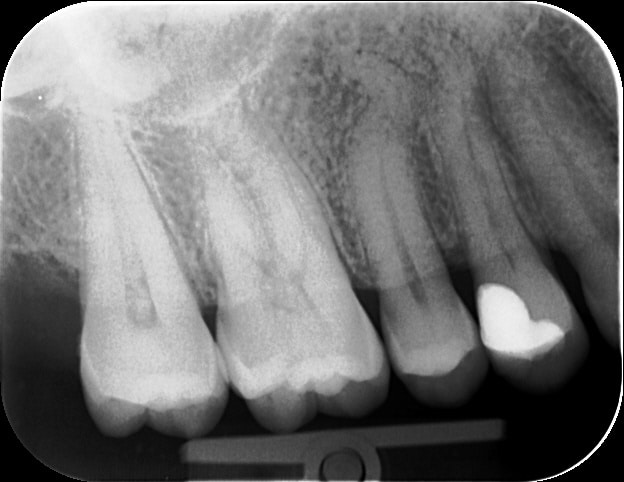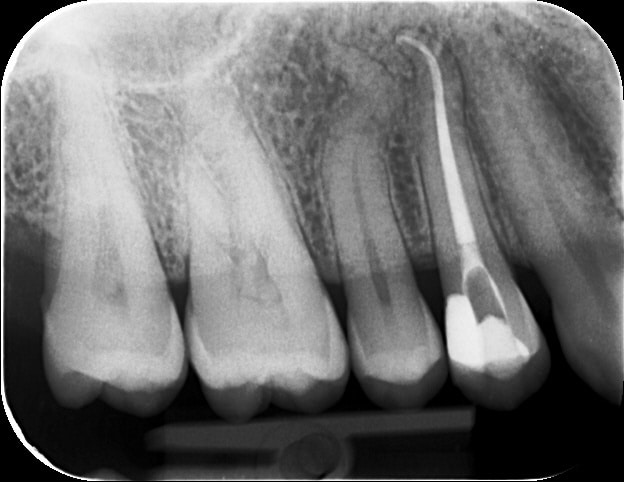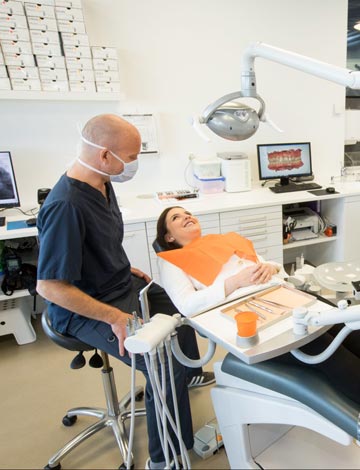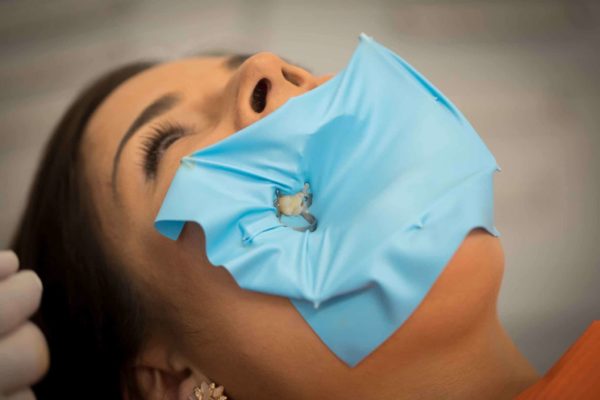Caring for my teeth
Root treatment
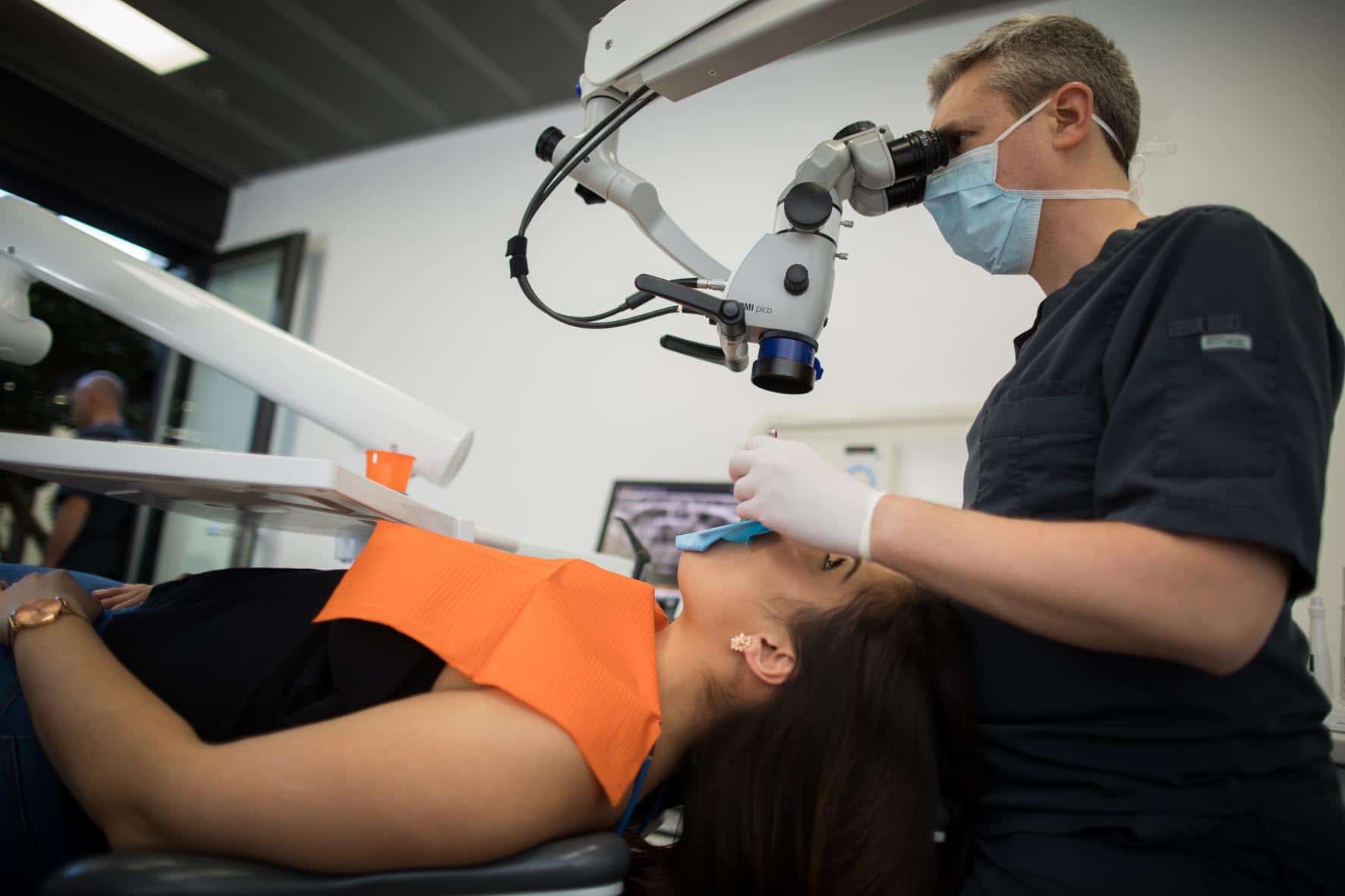
Root treatment is a specialty of general dentistry, technically known as “endodontics”. General dentistry, also known as omnipractice, is practiced by all our dentists. It covers 3 categories:
- Conservative treatment (treatment of cavities): the least invasive and longest-lasting techniques for restoring the integrity of teeth
- Endodontics (root treatment): when the dental nerve is damaged, root treatment requires great finesse and state-of-the-art equipment.
- Pediatric dentistry (care of children): a specific, gentle approach to children’s care
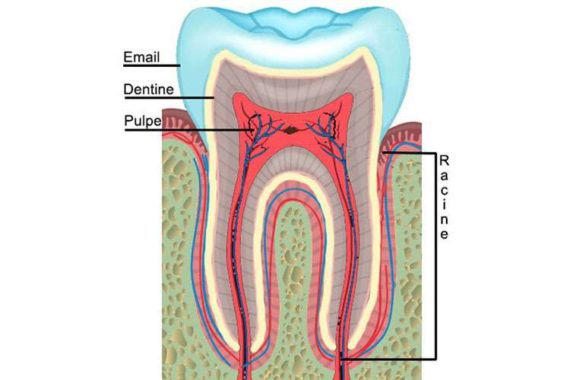
What is endodontics?
Endodontics is a specialty of dentistry that involves the prevention, diagnosis and treatment of pathologies of the dental pulp. But what is the dental pulp?
Here’s a simple image to illustrate the dental pulp.
In a nutshell, the dental pulp, circulating in a canal system (canals located in the root(s)), ensures the innervation and vascularization of the tooth. It makes the tooth a living organ.
What is a root canal?
Endodontic treatment, commonly referred to as root canal treatment, is the removal of the tooth’s pulp. It is performed under local anaesthetic, using special instruments for optimal disinfection. Depending on the vitality of the dental pulp and the difficulty of the root canal system, it can be performed in one to three sessions, scheduled at regular intervals of one week to 10 days.
In detail, root canal treatment consists of:
- Placing a dental dam, which corresponds to an operating field to work under cover of saliva and limit the risk of ingesting instruments
- Remove any remnants of pulp tissue still alive in the tooth or already in the process of decomposition
- Scrupulously clean the inside of this tooth mechanically with manual or mechanical dental instruments (pins), but also chemically with abundant rinsing of the canal with sodium hypochlorite (dakin)
- Shape the dental canal up to the apex of the tooth (the end of the root in the bone) to allow this cleaning along the entire length of the root
- Dry the dental canal with specific, calibrated paper tips
- Obtain the dental canal with gutta-percha (heated or cold), which bonds to the canal walls thanks to the simultaneous application of cement.
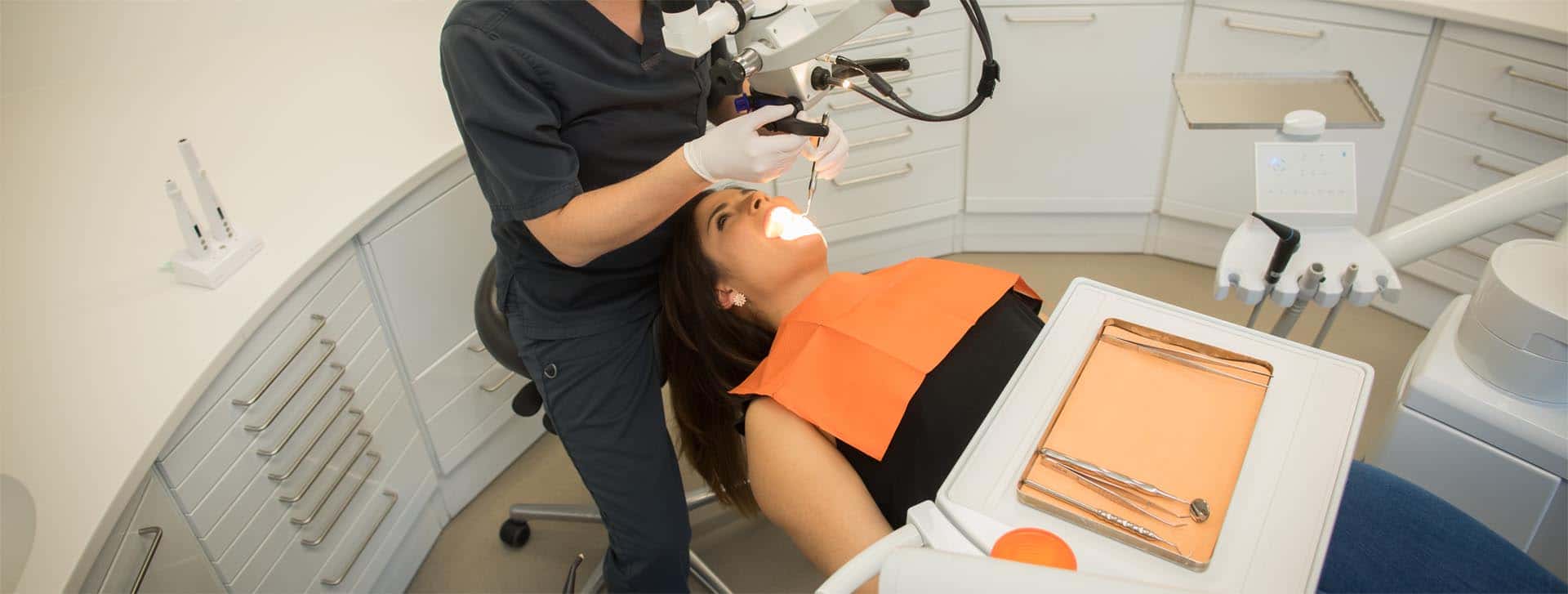
Microscopes to improve chances of success...
The root canal system is not always easy to access, and is generally very small. It is therefore sometimes difficult to achieve working conditions with good vision. In our center, root canal treatment, like many other more conventional procedures, is generally carried out with optical magnification equipment: magnifying glasses or operating microscopes installed in every practice.
Please note! Root canal treatment can cause temporary pain, which usually disappears quickly!
When the dental pulp is dead or cannot be kept alive, root canal therapy becomes the only treatment option for keeping the tooth in the mouth. It prevents the onset or eliminates infection, the cause of which may be one of the following:
- A cavity
- A faulty root treatment
- A dental accident
- A severe periodontal (gum) problem
In cases where the prognosis for root treatment is too unfavorable, or root treatment is unsuccessful, replacement of the tooth to be extracted can be carried out by dental implant or removable appliance.
